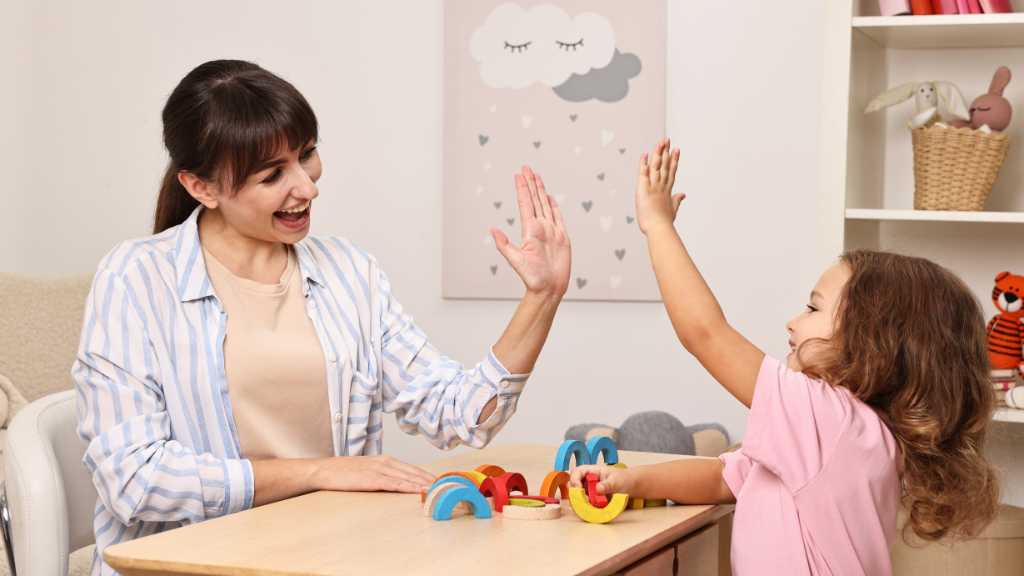How does the RAADS-R test detect autism in adults?
Uncovering autism in adults is helpful, yet often overlooked. Typically, discussions around autism detection center on children, emphasizing the importance of early diagnosis and intervention for optimal skill development. However, there is a significant need to address the detection of autism in adults. That’s where the Ritvo Autism Asperger Diagnostic Scale-Revised (RAADS-R) test comes in. ABA agencies highly recommend RAADS-R, which serves as a valuable tool for assessing adults suspected of having autism.
The RAADS-R test, as highlighted in the Journal of Autism and Developmental Disorders, thoroughly evaluates various aspects of an individual’s autistic traits, including communication patterns, social skills, and repetitive behaviors.
At ABA Centers of New Jersey, in addition to providing autism services in Woodstown, Trenton, Paterson, and various parts of the Garden State, we are also passionate about supporting neurodivergent individuals and families. In this blog, we offer valuable insights into the RAADS-R test, its history, and how it works.
A Brief History of the RAADS-R Test
It was created in 2008 by Dr. Riva Ariella Ritvo. The RAADS-R test aimed to identify cognitive and behavioral traits in individuals on the autism spectrum. As autism became increasingly prevalent, especially among adults seeking support, the need for a comprehensive screening tool arose. The RAADS-R test aims to fill that gap, offering a reliable method for diagnosing autism in adults.
The test has evolved from the original version, now known as the RAADS-R, which consists of 80 questions. These questions assess personal interests and provide more precise definitions for the initial inquiries. The test is typically self-reported and suitable for individuals over 16 with an average IQ range.
How Does the RAADS-R Test Work?
The RAADS-R questionnaire consists of 80 questions that assess various characteristics commonly associated with autism. You’ll rate your responses on a specific scale, which will ultimately provide you with a cumulative score. A higher score indicates a greater likelihood of having traits associated with the autism spectrum.
The questionnaire categorizes these questions into four main sections, each addressing different aspects of behavior and functioning:
- Processing Sensory Information
- Social Connections
- Communication Skills
- Specific Interests
Within each section, you’ll find statements with four response options: True Only Now, True Now and When I was Young, True Only When I was Younger than 16, or Never True.
Categories of the RAADS-R Test
Language
The language subscale of the RAADS-R includes statements that center around the following:
- Small talk: Engaging in casual conversation about topics that might not be the individual’s top choice without fixating solely on highly preferred interests.
- Echolalia: Reciting language scripted from sources like TV, music, or books.
- Taking things literally: Facing challenges in understanding if the intention matches what is said. For example, metaphors or implied meanings can be perplexing for the individual.
Social Relatedness
The Social Relatedness subscale consists of 39 statements that delve into various aspects of social interaction:
- Mentalization:Struggling to grasp the thoughts and feelings of others.
- Mutual Interests:A preference for spending time with individuals who share similar interests.
- Outsider:Feeling a sense of being different from others.
- Bluntness:Being perceived as rude, asking inappropriate questions, or openly pointing out others’ mistakes.
- Dialectical reciprocity:Difficulty with taking turns or knowing when to respond in a conversation.
- Emotional mutuality:Challenges in identifying flirting or recognizing emotional responses.
- Auditory processing issues:Struggles with communication in situations involving multiple people talking simultaneously.
- Object permanence:Not missing others when they are absent.
- Maintaining relationships:Difficulty in establishing or sustaining relationships.
- Nonverbal communication:Challenges in understanding and interpreting body language.
- Imitation/mimicry:Copying the behaviors of others.
- Camouflaging:Masking automatic behaviors to better fit in socially.
Sensory-Motor
The sensory-motor subscale consists of 20 statements that assess:
- Voice volume: Talking too softly or loudly or experiencing significant fluctuations between extremes.
- Voice differences: Utilizing distinct voices that may seem cartoonish, childlike, silly, or monotone.
- Motor Control Issues: Demonstrating clumsiness or facing challenges in coordination.
- Sensory: Engaging in sensory-seeking behavior that could be painful, harmful, dangerous, or overwhelming. Sensory overstimulation may also lead to the presence of anxiety.
Circumscribed Interests
The circumscribed interest subscale delves into 14 statements that assess:
- Detail preference: Concentrating on finer details rather than the overall picture or struggling to manage both simultaneously.
- Stress around the unexpected: Displaying a strong adverse reaction to unforeseen changes.
- Special interests: Persistently dwelling on specific, specialized areas of interest.
How to Interpret the RAADS-R Score Test
The scores on the RAADS-R can range from 0 to 240, with higher scores indicating a higher likelihood of autism spectrum conditions. The threshold for considering someone as having a high probability of autism can vary, but generally, a total score of 65 or higher is often used as a cutoff for suggesting further evaluation for autism spectrum conditions.
Here are some explanations for RAADS-R scores:
- 25: No indication of autism criteria
- 50: Possible possession of traits, but unlikely to have the condition
- 65: Minimum score to suggest Autism Spectrum Disorder (ASD)
- 90: Strong indication of the autism spectrum; it’s worth noting that neurotypical individuals can also achieve high scores.
- 130: Typical score for autism
- 160: High indication of evidence for autism
- 227: Maximum score indicating a solid presence of autism traits
However, it’s important to note that the RAADS-R is not a diagnostic tool on its own, and a comprehensive assessment by a qualified healthcare professional is necessary for a formal diagnosis.
Other Autism Testing Options
If you find yourself unconvinced by this test, alternative options for autism testing and assessment are available for healthcare professionals to employ in evaluating individuals with autism. Several of these assessments include:
Autism Diagnostic Observation Schedule (ADOS-2):
This test is a standardized observational assessment used to measure social and communication behaviors associated with autism. It involves a series of structured and semi-structured activities.
Autism Diagnostic Interview-Revised (ADI-R):
It is a comprehensive, semi-structured interview conducted with parents or caregivers. It covers various aspects of an individual’s developmental history and current behaviors to aid in diagnosing autism.
Diagnostic Interview for Social and Communication Disorders (DISCO):
Administered by trained clinicians, the DISCO gathers information from individuals and, when possible, from caregivers, covering developmental history, social interactions, communication, interests, and behaviors. This interview aligns with diagnostic criteria such as those in the DSM-5 and ICD-10, thoroughly assessing an individual’s strengths and challenges.
Adult Repetitive Behavior Questionnaire (RBQ-2A)
It focuses specifically on repetitive behaviors commonly associated with ASD. Administered through self-report, it assesses a range of repetitive behaviors, including motor movements, insistence on sameness, and circumscribed interests.
Difficulties of Autism Self-Diagnosis
While you may observe early signs of developmental issues or autism, experts strongly discourage self-diagnosis or attempting to determine if you or your child has autism without professional guidance. Particularly in early childhood, clinicians advise collaborating to ensure an accurate and reliable diagnosis.
Various websites provide resources for adults who suspect they may have autism, aiding in clarifying insights either independently or before consulting a medical professional.
However, it is crucial to recognize that even well-established tools like the RAADS-R test, while widely used, have limitations and should not replace the expertise of a qualified healthcare professional.
The spectrum nature of autism means that symptoms can manifest differently in everyone, further underscoring the importance of seeking personalized, professional help. Online resources and self-assessment tools may serve as initial steps in the journey. Still, they should be considered complementary to the comprehensive evaluation and support provided by trained specialists rather than a substitute.
ABA Centers of New Jersey and Autism Care
At ABA Centers of New Jersey, we believe every individual with autism deserves personalized care and attention. That’s why we offer a wide range of autism services tailored to meet each person’s unique needs.
If you need professional guidance in detecting autism in yourself or a loved one, please don’t hesitate to contact our team at (855) 640-7888. Alternatively, you can fill out the contact form, and we will call you back at your convenience.







